JavaScript is disabled. For a better experience, please enable JavaScript in your browser before proceeding.
Last night, my riding snowblower got something caught in the wheel that pushed the sidewall in on one of the rear tires, causing a flat. The tire and rim are fine, and I got the actual object unstuck from the tire. The problems is that I am having a tough time re-inflating the tire, since the sidewall is not tight against the outside of the rim.<BR><BR>View image: http://members.arstechnica.com/x/svdsinner/SnowblowerTireOutside.jpg <BR><BR>I realized that last night the problem was heavily exacerbated by the 20F weather and the tire being "frozen" out of round. I towed the snowblower into my garage (probably 50F) overnight and had it up on jacks to warm up the tire and let it get round again. <BR><BR>I now have it firmly seated on the inside of the tire: (crappy low-light cell phone pict)<BR> View image: http://members.arstechnica.com/x/svdsinner/SnowblowerTireInside.jpg <BR><BR>but, I can't seem to get both the inside and the outside of the tire on the rim at the same time. Thus when I try to inflate it, the air escapes so fast that I can't develop any force to seat the tire.
 <BR><BR>Suggestions?
<BR><BR>Suggestions?
DO you have any ratchet straps?<BR><BR>If you do, wrap that around the circumference of the tire and tighten it down. Then try to inflate. This helps to squeeze the bead along the rim giving the air a way to build pressure. <BR><BR>Conversely, do you have any lighter fluid? That is the more fun way. This is just a "controlled explosion" that instantly fits the tire...<BR><BR>I've done either of these ways back when I was more of an avid offroader. I've you've ever tried to mount 39" tires on 15" rims in 20 degree weather... you learn quickly the best way to get them BACK on the rim ASAP.
<BR><BR>Conversely, do you have any lighter fluid? That is the more fun way. This is just a "controlled explosion" that instantly fits the tire...<BR><BR>I've done either of these ways back when I was more of an avid offroader. I've you've ever tried to mount 39" tires on 15" rims in 20 degree weather... you learn quickly the best way to get them BACK on the rim ASAP.
<BLOCKQUOTE><div>quote:</div><div>Originally posted by polar:<BR>Conversely, do you have any lighter fluid? That is the more fun way.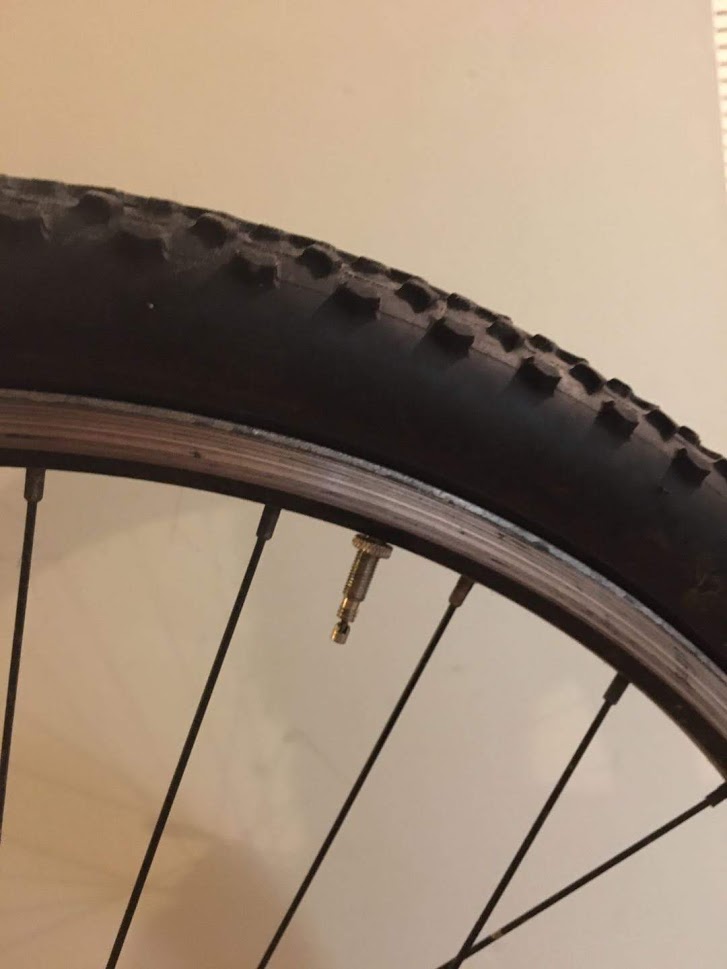 </div></BLOCKQUOTE><BR>What do you do with lighter fluid? How's that work?<BR><BR>I'm heading down to try the ratchet straps.
</div></BLOCKQUOTE><BR>What do you do with lighter fluid? How's that work?<BR><BR>I'm heading down to try the ratchet straps.
<BLOCKQUOTE><div>quote:</div><div>Originally posted by svdsinner:<BR><BLOCKQUOTE><div>quote:</div><div>Originally posted by polar:<BR>Conversely, do you have any lighter fluid? That is the more fun way. </div></BLOCKQUOTE><BR>What do you do with lighter fluid? How's that work?<BR><BR>I'm heading down to try the ratchet straps. </div></BLOCKQUOTE><BR><BR>lighter fluid in tire <BR><BR>match thrown at tire <BR><BR>boom <BR><BR>seated
</div></BLOCKQUOTE><BR>What do you do with lighter fluid? How's that work?<BR><BR>I'm heading down to try the ratchet straps. </div></BLOCKQUOTE><BR><BR>lighter fluid in tire <BR><BR>match thrown at tire <BR><BR>boom <BR><BR>seated
Using what ever you've got that highly flammable; carb cleaner, lighter fluid.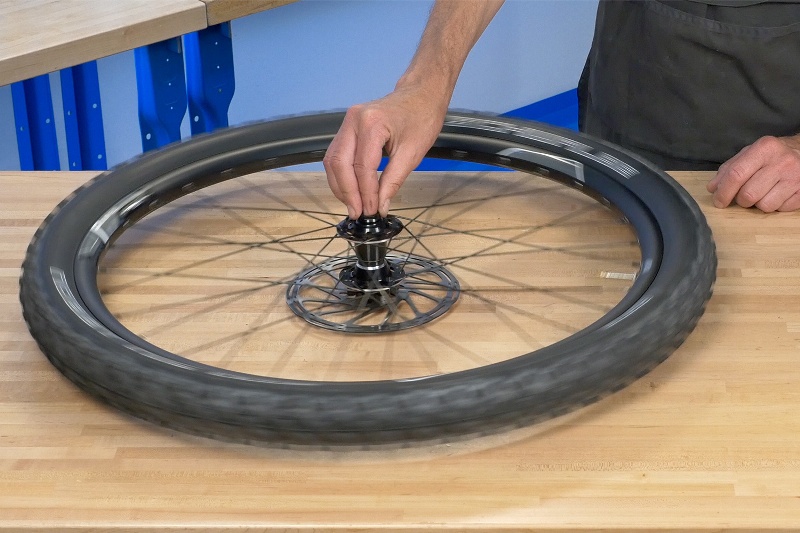 .. <BR><BR>Set the tire on its side, spray lighter fluid around the bead and spay some inside the rim... step back a few passes and start tossing matches at the tire. When the fluid lights it expands so quickly that the air does not have a chance to leak out before it fits the tire beads to the lip of the rim.<BR><BR>BTW with a tire that SMALL you wouldn't need much "boom," as Searchy puts it.
.. <BR><BR>Set the tire on its side, spray lighter fluid around the bead and spay some inside the rim... step back a few passes and start tossing matches at the tire. When the fluid lights it expands so quickly that the air does not have a chance to leak out before it fits the tire beads to the lip of the rim.<BR><BR>BTW with a tire that SMALL you wouldn't need much "boom," as Searchy puts it.
I used to grab the tire and move it back and forth on the rim while someone else worked the air.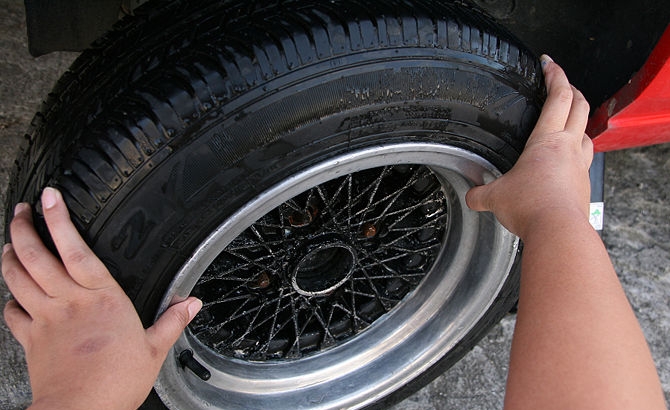 Need a pretty high volume compressor, though.
Need a pretty high volume compressor, though.
<BLOCKQUOTE><div>quote:</div><div>Originally posted by JimJimmery:<BR>I used to grab the tire and move it back and forth on the rim while someone else worked the air. Need a pretty high volume compressor, though. </div></BLOCKQUOTE>Good call, if it is in his garage (didn't read that part), crank that compressor up to 120 PSI and just let the air fly while you move the tire around on the rim.
</div></BLOCKQUOTE>Good call, if it is in his garage (didn't read that part), crank that compressor up to 120 PSI and just let the air fly while you move the tire around on the rim.
I had a similar problem with a tire on a garden cart a couple years ago. I tried the belt/rope thing without luck. Tried the high pressure blast of air thing, no luck. Tried the lighter fluid thing, using charcoal lighter, no luck.<BR><BR>Then I found another suggestion on the internet that did the trick. Use rubber cement to get the sidewall to stick to the rim. It held it in place just enough and provided enough of a seal so that I could fill the tire with my small compressor.
I tried the belt/rope thing without luck. Tried the high pressure blast of air thing, no luck. Tried the lighter fluid thing, using charcoal lighter, no luck.<BR><BR>Then I found another suggestion on the internet that did the trick. Use rubber cement to get the sidewall to stick to the rim. It held it in place just enough and provided enough of a seal so that I could fill the tire with my small compressor.
Had this problem with a wheelbarrow once.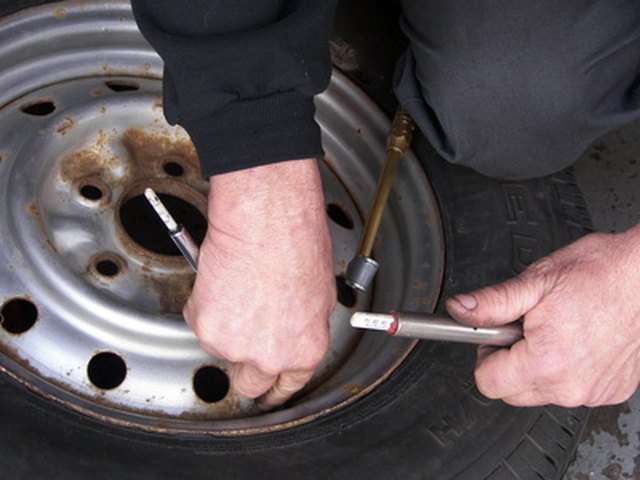 The only solution we had at the time was to swing by a nearby auto mechanic who was able to fix it in two minutes.
The only solution we had at the time was to swing by a nearby auto mechanic who was able to fix it in two minutes.
<BLOCKQUOTE><div>quote:</div><div>Originally posted by Cool Modine:<BR>The only solution we had at the time was to swing by a nearby auto mechanic who was able to fix it in two minutes.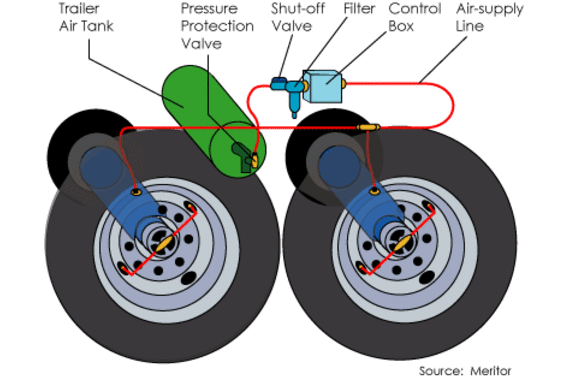 </div></BLOCKQUOTE><BR><BR>++ If it's too much of a hassle trying to do it yourself, a tire place can do it in 5 minutes for about $20 max. Had to have it done to one of my truck tires 6 years ago when I spun out on a patch of black ice and went down an embankment.
</div></BLOCKQUOTE><BR><BR>++ If it's too much of a hassle trying to do it yourself, a tire place can do it in 5 minutes for about $20 max. Had to have it done to one of my truck tires 6 years ago when I spun out on a patch of black ice and went down an embankment.
<BLOCKQUOTE><div>quote:</div><div>Originally posted by Primeous:<BR><BLOCKQUOTE><div>quote:</div><div>Originally posted by Cool Modine:<BR>The only solution we had at the time was to swing by a nearby auto mechanic who was able to fix it in two minutes.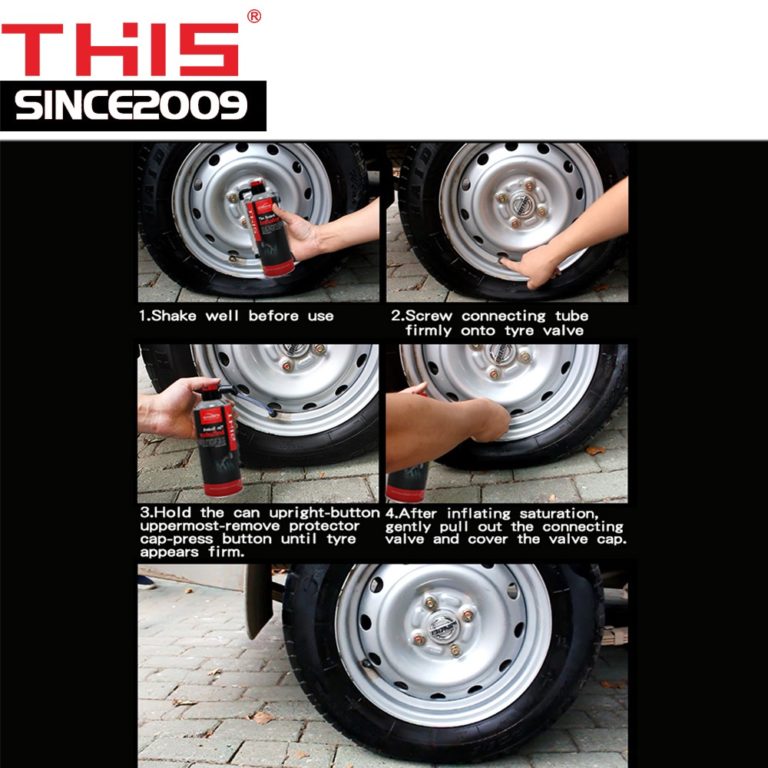 </div></BLOCKQUOTE><BR><BR>++ If it's too much of a hassle trying to do it yourself, a tire place can do it in 5 minutes for about $20 max. Had to have it done to one of my truck tires 6 years ago when I spun out on a patch of black ice and went down an embankment. </div></BLOCKQUOTE><BR><BR>+++ A decent shop does it for free. But the butane thing sounds really fun. I've seen it on T.V.
</div></BLOCKQUOTE><BR><BR>++ If it's too much of a hassle trying to do it yourself, a tire place can do it in 5 minutes for about $20 max. Had to have it done to one of my truck tires 6 years ago when I spun out on a patch of black ice and went down an embankment. </div></BLOCKQUOTE><BR><BR>+++ A decent shop does it for free. But the butane thing sounds really fun. I've seen it on T.V.
Strap --> Didn't work<BR>120 PSI from the compressor --> didn't work<BR><BR><BR>Search for volatile liquids yields: Brake cleaner, WD40.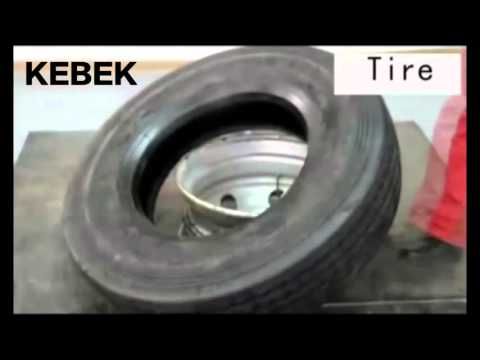 Will either of these be volatile enough? (without damaging the tire rubber)
Will either of these be volatile enough? (without damaging the tire rubber)
<blockquote>
<div>quote:</div>
<div>Originally posted by svdsinner:<br>Strap --> Didn't work<br>120 PSI from the compressor --> didn't work<br>(without damaging the tire rubber) </div>
</blockquote>
-- View image here: http://episteme. arstechnica.com/groupee_common/emoticons/icon_frown.gif --<br><br>That's cruddy.<br><br>WD-40 would work I'd think, but it may evaporate too quickly.
arstechnica.com/groupee_common/emoticons/icon_frown.gif --<br><br>That's cruddy.<br><br>WD-40 would work I'd think, but it may evaporate too quickly.
Brake cleaner would be better but you will have to work fast. Ether is the truckers old stand-by for this sort of thing, much better bang for the buck. Start with small burst sprays and work your way up to larger volumes. Don't just haul off and hose the thing like its a stack of charcoal thus setting everything within the blast radius on fire. <BR><BR>Alternatively, take it to a Discount Tire store. They shouldn't charge you anything to re-seat the bead (but you might give the guy who does the deed a small tip just to be nice)<BR><BR>Also, get the beads and the rim wet with soapy water before you try anything. It will help things slide into place and also it will form a better initial seal making it easier to get the tire to take pressure.
Start with small burst sprays and work your way up to larger volumes. Don't just haul off and hose the thing like its a stack of charcoal thus setting everything within the blast radius on fire. <BR><BR>Alternatively, take it to a Discount Tire store. They shouldn't charge you anything to re-seat the bead (but you might give the guy who does the deed a small tip just to be nice)<BR><BR>Also, get the beads and the rim wet with soapy water before you try anything. It will help things slide into place and also it will form a better initial seal making it easier to get the tire to take pressure.
Spray the rim and the bead in hairspray.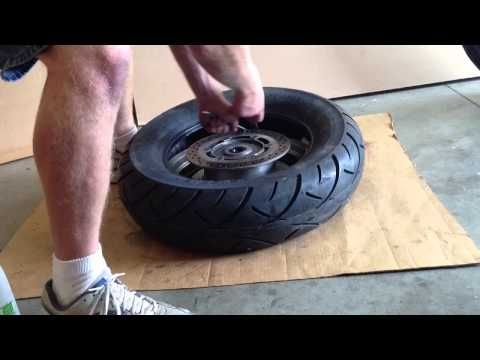 <BR><BR>Then spin the tire back and forth on the rim till the hairspray warms up and makes the tire stick to the rim.<BR><BR>Then blast with air.
<BR><BR>Then spin the tire back and forth on the rim till the hairspray warms up and makes the tire stick to the rim.<BR><BR>Then blast with air.
Take the wheel off. Lay it on it's side. Wrap the strap around the tire in the center of the tread. Crank it down. Then crank it down a little more. It should force the bead against the rim. It might not be centered where it needs to be, but as long as it's tight, it will work. Make sure the valve is inside the tire (yes, I've seen people try this with the air going OUTISDE the tire). <BR><BR>Hit it with the air and air it up to the right pressure. Then start releasing the strap while keeping the air to it. It should push the beads outward towards their seats. When seated, fill to pressure and you are done.
Crank it down. Then crank it down a little more. It should force the bead against the rim. It might not be centered where it needs to be, but as long as it's tight, it will work. Make sure the valve is inside the tire (yes, I've seen people try this with the air going OUTISDE the tire). <BR><BR>Hit it with the air and air it up to the right pressure. Then start releasing the strap while keeping the air to it. It should push the beads outward towards their seats. When seated, fill to pressure and you are done.
YEEEEEHAAAAWWWWW!!!<BR><BR>The brake cleaner idea worked. The first attempt with about 1 second of spray did nothing. The second attempt with about 3 seconds of spray did the trick. At first nothing, just the bit of brake cleaner on the outside of the tire burning, then after about 1-2 seconds, HAWUMP, and the tire was seated. After about 10 seconds there was a secondary "Pop-shhhhh", which I assume was the cooling internal air sucking in some outside air, and the tire pulled back in a little. However, it was still on enough that the 120 PSI compressor reseated it right away.<BR><BR>(Hannible Smith)I love it when a plan (involving explosions) comes together(/Hannible Smith)<BR><BR>Now I need to go do some snow blowing . . .
The first attempt with about 1 second of spray did nothing. The second attempt with about 3 seconds of spray did the trick. At first nothing, just the bit of brake cleaner on the outside of the tire burning, then after about 1-2 seconds, HAWUMP, and the tire was seated. After about 10 seconds there was a secondary "Pop-shhhhh", which I assume was the cooling internal air sucking in some outside air, and the tire pulled back in a little. However, it was still on enough that the 120 PSI compressor reseated it right away.<BR><BR>(Hannible Smith)I love it when a plan (involving explosions) comes together(/Hannible Smith)<BR><BR>Now I need to go do some snow blowing . . .
How not to do it . .. or the Top Gear lot get someone to do it for them.<BR><BR>http://www.youtube.com/watch?v=p2HXHFhhHlM
.. or the Top Gear lot get someone to do it for them.<BR><BR>http://www.youtube.com/watch?v=p2HXHFhhHlM
<BLOCKQUOTE><div>quote:</div><div>Originally posted by svdsinner:<BR>YEEEEEHAAAAWWWWW!!!<BR><BR>The brake cleaner idea worked. The first attempt with about 1 second of spray did nothing. The second attempt with about 3 seconds of spray did the trick. At first nothing, just the bit of brake cleaner on the outside of the tire burning, then after about 1-2 seconds, HAWUMP, and the tire was seated. After about 10 seconds there was a secondary "Pop-shhhhh", which I assume was the cooling internal air sucking in some outside air, and the tire pulled back in a little. However, it was still on enough that the 120 PSI compressor reseated it right away.<BR><BR>(Hannible Smith)I love it when a plan (involving explosions) comes together(/Hannible Smith)<BR><BR>Now I need to go do some snow blowing . . . </div></BLOCKQUOTE>And, I bet it was fun wasn't it?!
The first attempt with about 1 second of spray did nothing. The second attempt with about 3 seconds of spray did the trick. At first nothing, just the bit of brake cleaner on the outside of the tire burning, then after about 1-2 seconds, HAWUMP, and the tire was seated. After about 10 seconds there was a secondary "Pop-shhhhh", which I assume was the cooling internal air sucking in some outside air, and the tire pulled back in a little. However, it was still on enough that the 120 PSI compressor reseated it right away.<BR><BR>(Hannible Smith)I love it when a plan (involving explosions) comes together(/Hannible Smith)<BR><BR>Now I need to go do some snow blowing . . . </div></BLOCKQUOTE>And, I bet it was fun wasn't it?!
<BLOCKQUOTE><div>quote:</div><div>Conversely, do you have any lighter fluid? That is the more fun way.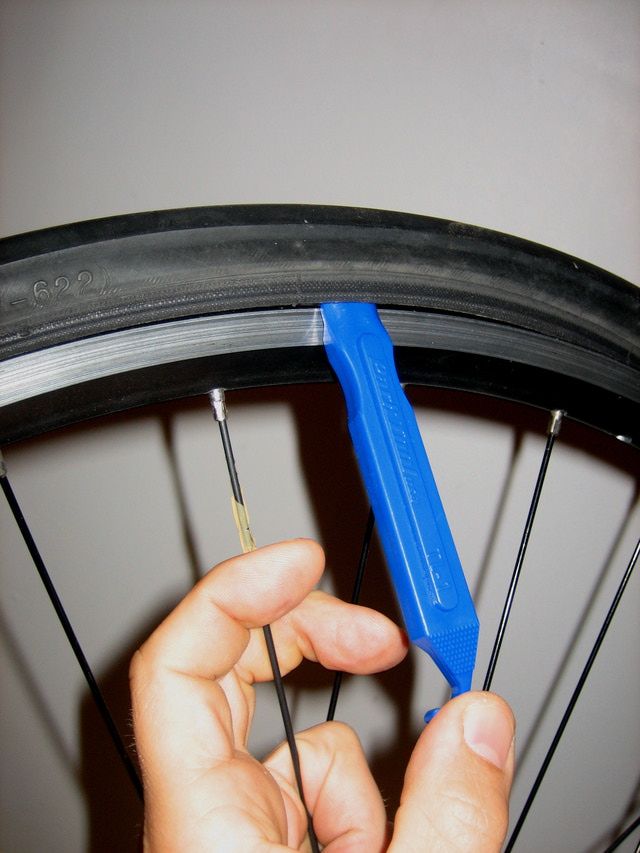 This is just a "controlled explosion" that instantly fits the tire... </div></BLOCKQUOTE><BR><BR>This is the way I recommend too, way more fun than straps...<BR><BR>edit: Doh, glad you went the explosive route.
This is just a "controlled explosion" that instantly fits the tire... </div></BLOCKQUOTE><BR><BR>This is the way I recommend too, way more fun than straps...<BR><BR>edit: Doh, glad you went the explosive route.
I still can not believe that there is actually a legitimate use for explosives. <BR><BR>I approves!
<BR><BR>I approves!
<blockquote>
<div>quote:</div>
<div>Originally posted by polar:<br><blockquote>
<div>quote:</div>
<div>Originally posted by svdsinner:<br>YEEEEEHAAAAWWWWW!!!<br><br>The brake cleaner idea worked.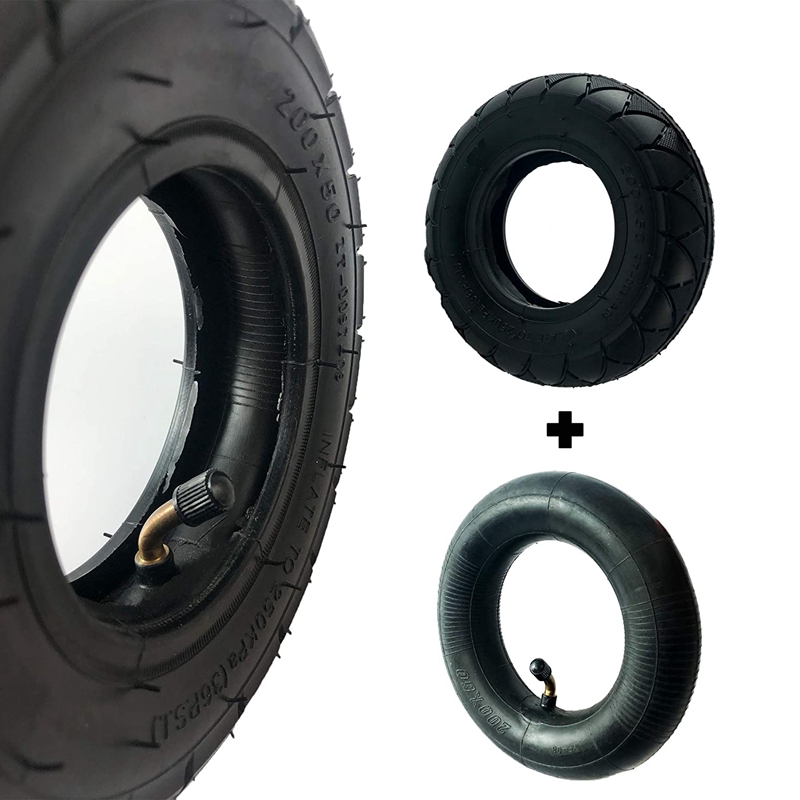 The first attempt with about 1 second of spray did nothing. The second attempt with about 3 seconds of spray did the trick. At first nothing, just the bit of brake cleaner on the outside of the tire burning, then after about 1-2 seconds, HAWUMP, and the tire was seated. After about 10 seconds there was a secondary "Pop-shhhhh", which I assume was the cooling internal air sucking in some outside air, and the tire pulled back in a little. However, it was still on enough that the 120 PSI compressor reseated it right away.<br><br>(Hannible Smith)I love it when a plan (involving explosions) comes together(/Hannible Smith)<br><br>Now I need to go do some snow blowing . . . </div>
The first attempt with about 1 second of spray did nothing. The second attempt with about 3 seconds of spray did the trick. At first nothing, just the bit of brake cleaner on the outside of the tire burning, then after about 1-2 seconds, HAWUMP, and the tire was seated. After about 10 seconds there was a secondary "Pop-shhhhh", which I assume was the cooling internal air sucking in some outside air, and the tire pulled back in a little. However, it was still on enough that the 120 PSI compressor reseated it right away.<br><br>(Hannible Smith)I love it when a plan (involving explosions) comes together(/Hannible Smith)<br><br>Now I need to go do some snow blowing . . . </div>
</blockquote>And, I bet it was fun wasn't it?! </div>
</blockquote>
<br><br><br>OH YEAH!! -- View image here: http://episteme.arstechnica.com/groupee_common/emoticons/icon_biggrin.gif --<br><br>There is a special, magical feeling that you walk around with all day, knowing that you just solved a major problem with an explosion. And THEN, to top it off, when I stopped by the local Lowes to grab a bolt I needed, I passed by the discount table just as they were putting out new stuff. I spotted a set of tilt-head ratcheting wrenches that are normally $50 that were out of the box. I asked the manager what they would sell them for since they had no packaging. She sold them to me for $10. AWWW YEAH!!! <br><br>I'm in handyman heaven today.
And THEN, to top it off, when I stopped by the local Lowes to grab a bolt I needed, I passed by the discount table just as they were putting out new stuff. I spotted a set of tilt-head ratcheting wrenches that are normally $50 that were out of the box. I asked the manager what they would sell them for since they had no packaging. She sold them to me for $10. AWWW YEAH!!! <br><br>I'm in handyman heaven today.
You will certainly be very worried if your car has a problem and you have to remove the tires. After fixing the problem, It's not easy to put the tire back on the rim.
There are practically countless ways to advise how to fit a tire to the rim, either by machine or by hand. This is also what makes many people interested to find out if a person who is not an auto mechanic or a professional can do this by himself at home.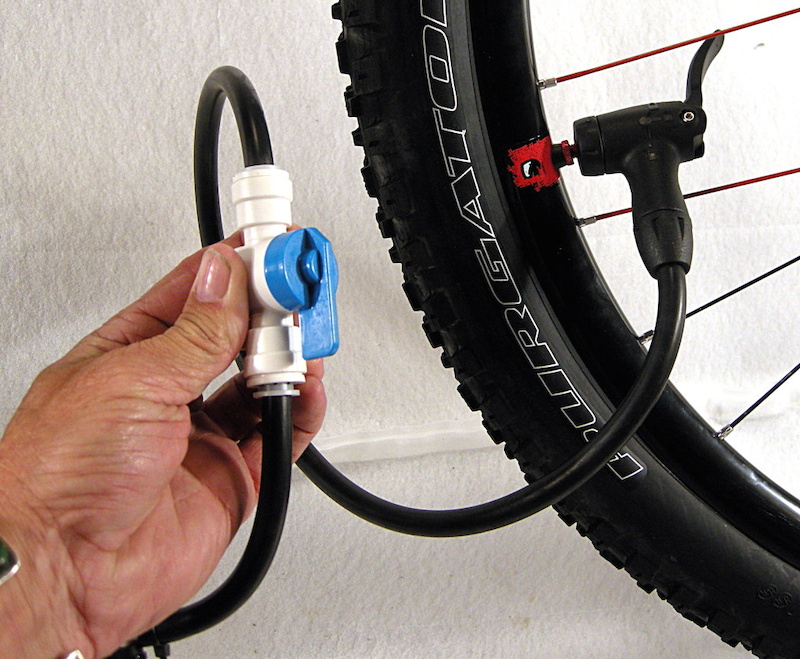
So, how to put a tire back on the rim? You need to use fire to do this, which requires high safety.
The following article will guide you through the steps and important notes to handle this error effectively.
Contents
Before starting a job, especially using a lot of tools like putting a tire back on the rim, you need to prepare:

Below, we will describe the steps in the most detailed and complete way. Each step will need specific notes and manipulations. In addition, there will be notes for each stage. Check it now!
This step is the first step in all your processes. What you need to do is make sure they are smooth. You need to raise your wheel part off the ground, which will make it easier for you to disassemble with the help of a lifting tool.
At the same time, you should only re-install the wheel in the vehicle when you have fixed the problems encountered. Errors that you need to improve after removing them. Make sure you've selected it all and don't have any doubts.
There are a number of causes leading to tire removal such as cracked or blown tires, punctured tires due to obstacles while moving. After the repair, you need to put the rim on the tire. Moreover, your car will be safe with a perfect wheel.
After the repair, you need to put the rim on the tire. Moreover, your car will be safe with a perfect wheel.
At this 2nd step, you will get a bottle of Fluid. They are often used as a support tool when you have difficulty starting the engine or cold. They will do the job perfectly under normal conditions.
Then, you use the spray in a circular direction around your wheel. In this next operation, carefully spray the liquid into the space between the sidewall tire and the rim. However, you should also ensure you're not taking too much of it.
The reason for adequate fluid is that too much of them can cause sidewall problems and even lead to failure, damage, and replacement.
At the same time, you should also spray on each ground in one line just below the edge. The effect of this activity is to help limit fires while you use matches/lighters and Starter Fluid.
Moreover, when using the above liquid, you need to be extremely careful when spraying on the wheels.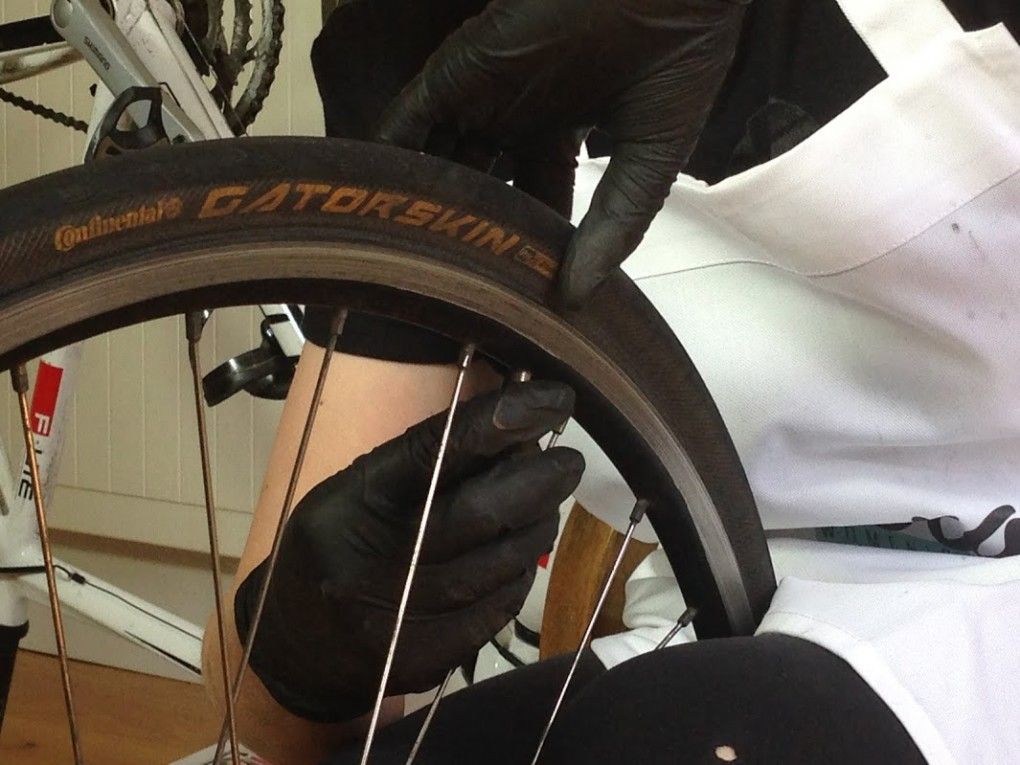 Due to their flammability and flammability that can cause a fire, it isn't easy even to end it.
Due to their flammability and flammability that can cause a fire, it isn't easy even to end it.
Therefore, you need to equip yourself with a fire extinguisher and the skills to manipulate them before assembling.
The third step in the process needs to be as soon as finishing step 2. This action will prevent the tire's granules from drying out and the solution from evaporating.
Then you start lighting it using matches, lighters, or other sources of fire. You light up the fluid associated with the components above from the ground. At the same time, it will help keep you safer in potentially explosive conditions.
But don’t worry your goal is to just light it up and then turn it off as soon as you can and that smoke is going to fill the tire, so you can do it a couple of times.
In addition, fire causes the air to expand rapidly, at the same time, the particles will move along the wheel and return to their original position.
After the tire bead is exposed to fire and when you hear the sound within 2 seconds. At this point, you need to put out the fire immediately. The faster you act, the sooner the fire is extinguished.
At this point, you need to put out the fire immediately. The faster you act, the sooner the fire is extinguished.
Moreover, the fire extinguisher at this time will also come into play.
When you hear the popping sound, it is time to end with the tire in place on the rim.
You need to use an inflator and pump outside air into your tires.
When the tire inflates, you can start or continue your journey on the vehicle that has changed the tire.
This method is standard when replacing a wheel on a rim, especially when you don't need a repair shop.
If you can't replace them yourself and are close to a store, you should take them out there. The staff will support and replace you. Then the safety will be more assured.
When taking any action, you need to be careful with what happens. The same goes for changing car tires. The effect you may experience is called Pyrolysis.
They are the decomposition process of substances by the effect of high temperature and long time. Likewise, Pyrolysis will overheat the tires, create layer pressure, and even blow the tire.
Likewise, Pyrolysis will overheat the tires, create layer pressure, and even blow the tire.
In addition, the wheel is hot due to the inflator. It can weld near or above the wheel and cause breakage at high temperatures.
It is also the reason described in the above section when it is necessary to pump the fire immediately. After you hear the sound, you only have two seconds to start putting out the fire.
This chemical phenomenon will occur even when a low temperature of 183 - 185 degrees Celsius. In particular, they do not need to use oxygen to perform. They continue to develop in the tire, even after removing the source of fire and heat.
This problem is difficult to detect and occurs from some seconds to several hours later. They push the tire pressure to 7000 kPa.
With such class pressure, people around the event may suffer some problems and damage their health if standing close.
Therefore, you need to ensure safety in all steps of this process. It will be awful if someone gets hurt, even if you are not driving on the road.

This problem is often when your vehicle is traveling on uneven surfaces. Here are the steps for you:
All you need to do now is stay as calm as possible. Things will get better when you fix it.
Next, try to move further to a safer place like the curb while still ensuring your rims. Moving to a nearby location is ideal. However, if you can't do that, warn everyone on the road, so they know and avoid it.
Once more stable, you need to remove the tire and place it on the ground. At the same time, flatten the tire and tighten it with the ratchet belt.
As described above, you will inflate the tire until you hear a sound and make sure the tire is in place.
Always carry tools in the car to make sure you can adapt and handle the best if you encounter this situation.
You can see more instructions here: Video created by Garage Boys
Thus, the article has provided the steps in putting a tire back on the rim. Hopefully, you can do this activity yourself.
Please note that using fire is convenient and easy but also extremely dangerous. You must ensure your safety.
Car repair shops can also help you do this assembly very well for a small cost.
0003 “It often happens: you approach the car, and the tire is flat. You pump and pump the compressor - zero. And then you start using the spare tire. But no, jack up the wheel, release it from the load and only then pump it. Helps...»
From the forum
Related materials
Nitrogen in tires is a scam. But there are real ways to save money!
Indeed, if a flat tire put the car “on the rims”, you begin to fear: will it be possible to pump it up at all? After all, the car with its mass compresses the tire, forcing air out of it and interfering with the operation of the compressor. And the heavier the car, the more difficult it is for the compressor, which has to spend energy also on lifting the “squatted” car ...
And the heavier the car, the more difficult it is for the compressor, which has to spend energy also on lifting the “squatted” car ...
The logic seems to be clear. However, let's calculate how much more difficult it becomes for the compressor.
First, let's estimate the energy consumption for lifting the car. To simplify, we assume that the mass of the car is 1200 kg, and roughly speaking, 300 kg per wheel. To lift these 300 kg to a height of 10 cm, you need to do work of 30 kgm, or 300 J (W s).
Now let's inflate the wheel. If a 120 W compressor does this for about 2 minutes, then the work done will be 14,400 J. This is about 50 times more than it takes to lift the car, and therefore there will be no practical benefit from pre-jacking.
Related materials
How to pump up a wheel without a compressor? Video instruction ZR
However, let's set up an experiment. We lower the tire at the editorial Almera and pump it up to 2. 0 bar, timing. The compressor took 2 minutes 10 seconds to do this job. We again lower the wheel “to zero”, jack up the car and repeat the experiment. The result is 2 min 09 s. The difference was less than one percent, which is comparable to the measurement accuracy.
0 bar, timing. The compressor took 2 minutes 10 seconds to do this job. We again lower the wheel “to zero”, jack up the car and repeat the experiment. The result is 2 min 09 s. The difference was less than one percent, which is comparable to the measurement accuracy.
Thus, there is no practical point in preliminary jacking up the car. And if you are very unlucky and the tire has come off the hump, then the jack will not help out either: it will not sit back on the hump ...
Photo: depositphotos.com
Our new video0003
How Muscovites really collect (video)
Did you like the article? Subscribe and you will always be in the know!
Driving on Yandex. Zen
Zen
News smi2.ru
It may be elementary, but being able to inflate bike tires is an essential skill for any cyclist.
Many of you already know how to do this, but for those who don't, the different types of valves, pumps, and more importantly, how much pressure to inflate your tire can be a little overwhelming. Let us help you through this process.
Contents
Pneumatic tires were invented to overcome the harsh "ride quality" of massive wheels.
The air inside acts like a spring, giving you suspension and allowing the tire to adapt to the terrain for better traction.
Tire inflation is a quick job that can easily improve your driving pleasure. Incorrect tire pressure will adversely affect cycling and make it more prone to punctures.
If you've never repaired a puncture before, you may not have thought about how your tires hold air in.
The vast majority of bikes will use a tube. It's a donut-shaped airtight tube that sits inside the tire with the inflation valve you see on the outside.
Inflated tire rests on the ground and provides puncture protection.
You may have heard of tubeless tires which do not have a tube but use a special rim and tire to seal air without using a tube. This usually requires a tubeless sealant, which is a liquid that plugs any air outlets.
Tubeless tires are more commonly used on mountain bikes, but the technology is moving to road bikes.
Tubeless sealant also seals punctures, and no tube means much less risk of pinching flat surfaces - that's when your inner tube gets pinched by the rim, causing a puncture. Thus, tubeless tires can run at lower pressures than inner tube tires to improve comfort, speed, and traction.
At the highest level, you also get tubular tires. They are essentially a tire with a tube built into it, but they are rarely seen or used outside of professional racing.
Inflating tires to the correct pressure is an important part of bike maintenance.
Running tires at too high or too low pressure can be potentially dangerous and can also affect your bike's handling.
Later we will discuss the correct pressure, but for now let's look at possible problems.
An under-inflated tire will reduce your efficiency and leave you vulnerable to annoying punctures.
If you drive with tires at too low pressure, the tire may wear out prematurely. Excessive sidewall deflection can lead to carcass cracking and tire brittleness. This can eventually lead to tire blowout.
Excessively low pressure also increases your susceptibility to punctures and can even cause your tires to literally jump off the rim if you turn at speed (the pressure inside is what keeps your tire on the rim).
Damage can also be caused by tire deflection up to the rim. This can lead to dents or cracks, which can compromise your wheel and require a costly replacement.
Conversely, too high pressure can cause the tire to come off the rim with explosive consequences. This pressure can also compress the wheel because if it is too high, the compressive force on the wheel can be too great.
From a drivability point of view, low pressure can lead to poor drivability due to the tire squirming under load. Your bike will be difficult to control and will be slow and sluggish.
On the other hand, too much pressure can lead to poor traction and a rough ride, leading to fatigue and in turn poor handling.
There are two possible reasons for your flat tire. Either you have a puncture or your tire has deflated over time.
The adhesiveless patches are great for a quick fix, while the more traditional kit is a versatile option when you have a bit more time.
All tire systems will bleed slowly because the tubes are not completely sealed. For example, standard butyl tubing retains air fairly well compared to lightweight latex tubing, which bleeds relatively faster.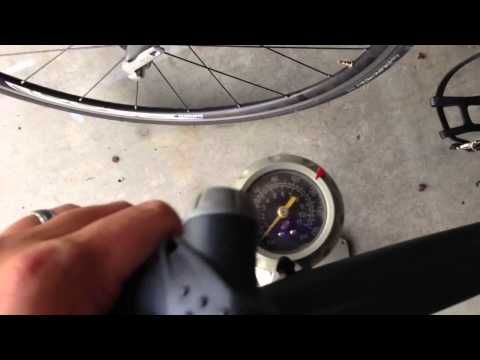 Even tubeless setups will slowly leak air.
Even tubeless setups will slowly leak air.
Old tubes will pass more air than new ones, so if they haven't been replaced in a while, it's worth taking a look at them. It is less likely, but also possible (especially on older tubes), that the valve is no longer sealing properly.
The best way to check what's going on is to try pumping up the tire. If it's holding air, you probably have nothing else to do. If this does not happen, most likely you have a puncture.
If air leaks slowly overnight, you have a slow puncture or just an old tube that needs to be replaced.
The first thing you need to know before inflating a tire is the valve type.
The valve is the key part that keeps the air in the tire but also allows the tire to be inflated (or deflated).
Schrader valve also used for car tires.
Schrader valves are more common on lower end bikes and in the past mountain bikes. The same valves are used on car tires.
The same valves are used on car tires.
The valve assembly is a hollow tube with a spring loaded valve that automatically closes and screws into the outer housing. The pin comes out of the valve and is usually flush with the end of the outer tube. This pin can be pressed to release air.
The dust cap on Schrader valves is an important part of the design that can help close the valve completely if it is not fully sealed. Essentially, it provides a secondary "backup" seal.
The spring-loaded design of the valve is slightly susceptible to contamination from dirt or sand, so it is important to protect it as well.
These Presta valves are longer and narrower than the Schrader style valve.
Presta valves are only found on bicycles.
They originated on road bikes, where a narrower valve (6mm versus 8mm for the Schrader) meant a smaller valve hole (usually the weakest part of the rim).
These days you can find them on both mountain bikes and road bikes. Instead of using a spring, the valve is held in place by a nut that holds it closed, although the valve itself seals "automatically" when the pressure inside the tire forces it to close.
Instead of using a spring, the valve is held in place by a nut that holds it closed, although the valve itself seals "automatically" when the pressure inside the tire forces it to close.
With a schrader valve you can simply press the pin to release the air, but with a Presta valve you first need to unscrew the small lock nut. Don't worry about the nut coming off the end of the valve body because the threads are rounded to prevent this from happening.
There seems to be a myth that Presta valves handle high pressures better - this is probably not true given that there are Schrader valves that can handle many hundreds of psi (much more than you'll ever need). in your tire).
However, Presta valves are definitely a bit more fragile than Schrader valves. It is very easy to strike the threaded inner body of the valve, bend it or break it, so care must be taken. However, valve cores are easily replaced with standard tools.
Compared to Schrader valves, this requires a special tool.
Presta valves can be supplied with a retaining ring that secures the valve body to the rim. This can make them easier to inflate. The dust cap is not essential to sealing it, but helps keep the valve clean.
The only other type of valve you may encounter is the Dunlop (also known as Woods) valve. The base diameter is the same as the Schrader valve but can be inflated with the same pump as the Presta valve.
They are very popular on city streets in Europe and elsewhere in the world, but you are unlikely to find one in the UK or the US.
The tubeless valve is difficult to distinguish from a regular Presta valve.
Valves for tubeless tires are attached directly to the rim, not part of the inner tube.
Most often they are of the Presta type, but there is also a Schrader.
If you have a Schrader type valve like the one shown above, the first thing you need to do is remove the dust cap (if there is one).
Simply unscrew the cap counterclockwise to open the valve.
Now attach the pump head.
Inflate the tire to between the minimum and maximum indicated on the tire sidewall and remove the pump. Ready!
If your bike has a Presta type valve like this one, you will first need to remove the plastic valve cover (if any).
The plastic cover will open another threaded valve cover.
Loosen the threads, but be careful not to damage them in the process.
Now attach the pump head of your choice to the open valve and inflate the tire to between the minimum and maximum pressure indicated on the sidewall of the tire.
Inflate the tire to the desired pressure and remove the pump.
Finally, close the valve by turning it clockwise and install the plastic valve cover.
If you have a tubeless tire or a tube with sealant inside, there are a few extra steps you should take to avoid contaminating your pump.
Turn the wheels so that the valves are at the bottom and leave for a few minutes to allow the sealant to drain.
Turn the wheels so that the valves are up and inflate the tires. The same thing happens when the tires are deflated to prevent the sealant from splattering all over the place.
We would say that if you can only own one type of pump, get a foot pump for home use because it is efficient, fast and easy to use.
However, there is no doubt that having an extra mini-pump for the duration of the trip is very useful - otherwise you risk getting stuck on the side of the road in case of a puncture.
There is no limit to pump selection. Basically, they all do the same job, some of them look better than others.
From budget to outrageously expensive, you'll find something to suit your needs.
Mini pumps work but are much more difficult to use. Again, there are many options that will fit in your pocket. We prefer hose mini pumps because it reduces stress (and potential damage) on the valve.
Again, there are many options that will fit in your pocket. We prefer hose mini pumps because it reduces stress (and potential damage) on the valve.
Another option for your inflation needs is the CO2 pump. They use compressed carbon dioxide in a small cartridge to inflate or fill a tire very quickly. Not something you would like to use on a regular basis, but perfect for emergency repairs.
The first thing to do is attach the pump to the valve.
Remove the valve cap, and regardless of valve type, we find it useful to let some air out to make sure the valve doesn't stick and opens and closes cleanly. Screw on the chuck, or push it in and lock it.
If your tire is completely flat, it may be difficult to install the cartridge at first because the valve tends to move back into the rim. Simply hold the valve at the back while pressing down on the outside of the tire so you can lock the cartridge in correctly.
The locking ring on Presta valves (if equipped) can also help by preventing the valve from dropping, holding it in place for you.
The connection to the valve must be tight. It is normal for a small amount of air to escape when installing the pump, but this should not last long. If so, remove and reinstall cartridge. If the problem persists, it might be worth checking the rubber seal in the chuck to make sure it's not worn out and needs to be replaced.
Remember to be careful with the valves - they are fragile. This is especially true if you are using a mini pump without a hose.
Be sure to secure the pump by hand to avoid applying too much force to the valve, which could cause damage.
When you start pumping, make sure you use the full stroke of the pump. You will find that most of the stroke is compressing the air to the point where it will be forced into the tire.
If you don't use the pump all the way, the air won't be forced out of the bottom - you need to pressurize to move the air from the pump to the tire. Instead, you'll just end up wasting your energy to no avail.
Instead, you'll just end up wasting your energy to no avail.
With a floor pump, don't just use your hands, use your body weight to push down and pumping becomes much easier.
Sometimes you may find that the pump does not hold pressure, especially when inflating a tire from a fully deflated position. This may especially apply to older pumps where the seals may be slightly worn.
We find that vigorous inflation first helps to create enough back pressure (i.e. tire side rebound) in the system to ensure that the valves actuate properly and seal the tire. Keep going until you get the right pressure.
When the cartridge is removed from the valve, a hiss of air loss can usually be heard. This usually happens on the pump side, not the valve side. The pressurized air from the hose and cartridge just comes out.
The pump pumps air into your tire. The principle of operation is simple; you increase the pressure inside the pump until it exceeds the pressure inside the tire.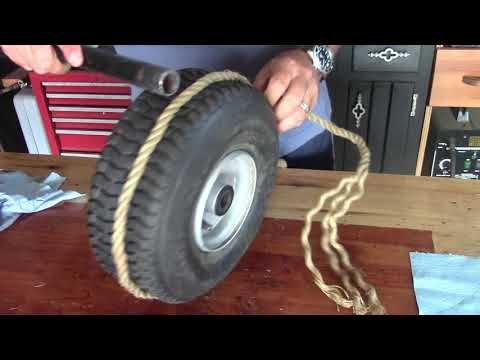 This "overpressure" forces air into the tire, which also increases tire pressure.
This "overpressure" forces air into the tire, which also increases tire pressure.
The pump is simply a manually operated piston. As the pump moves down, a check valve (allowing air flow in one direction) seals the piston chamber, causing the air pressure to rise as the pump is compressed. This pressure increases until it exceeds the pressure inside the tire.
At this point, the second one-way valve will allow air to flow from the pressure pump chamber into the tire. You extend the pump again, the check valve opens to fill the chamber with air, and you repeat the process.
To prevent leakage of tire pressure, the second check valve at the base of the pump closes. If it wasn't there, the pump would just open up again.
Presta valves close automatically, but spring-loaded Schrader valves are usually held open by a pin in the valve mount (meaning you don't need any additional inflation force to overcome the pressure exerted by the spring).
The pump head is also known as the cartridge.
The cartridge is the part that attaches the pump to the valve and forms an airtight seal over the valve. There is one of two designs: threaded or push-on with a locking lever. Most pumps nowadays can also be adapted to Schrader or Presta valves.
They will either have two different mounting points or a cartridge that can be changed for both types.
For large pumps (and many mini pumps too) the cartridge is often on the hose, preventing your force from damaging the valve.
Pumps are often equipped with a tire pressure gauge.
Correct tire pressure is perhaps one of the most controversial topics, but there are a few guidelines you can use.
As a rule of thumb, your tire should be strong enough to prevent it from flexing all the way to the rim, yet malleable enough to provide some suspension - after all, the beauty of a pneumatic tire is that you don't have an incredibly hard ride.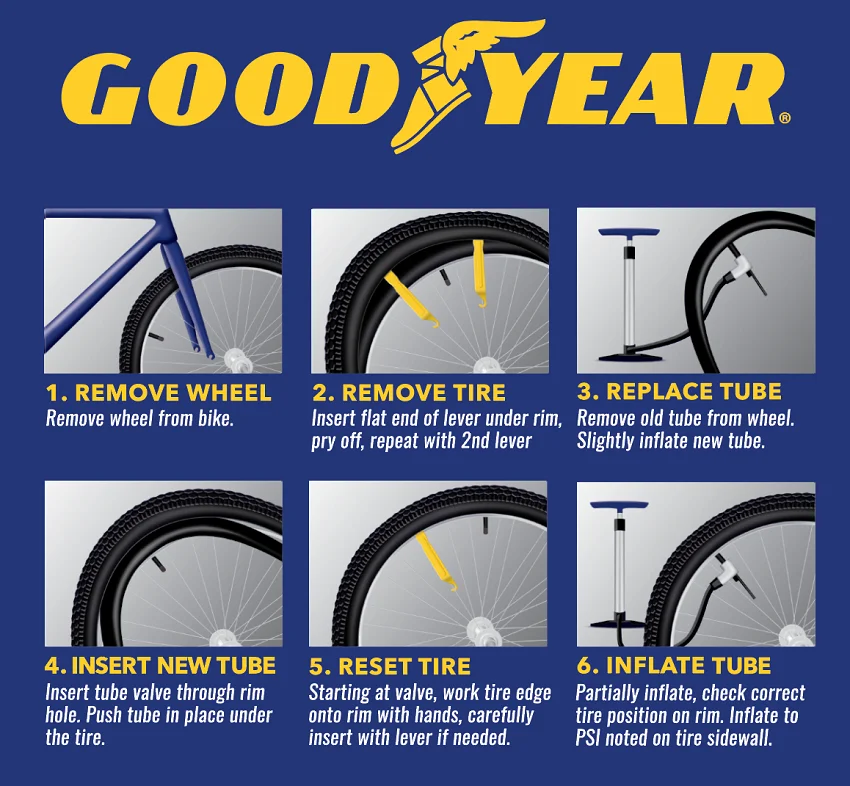
Most tires have a minimum and maximum pressure marked on the side. It is advisable not to go below or exceed these limits, because manufacturers have indicated them for a reason. Of course, this means there is still plenty of room to play around with the pressure and what works for you.
For mountain bikes, the problem is relatively easier to solve, since the goal is usually to improve traction, cornering, and damping.
As a rule of thumb, riders try to run as low pressure as possible without making it so soft that the tire squirms under load in a corner or flexes enough to damage the rim.
Things get a little more complicated for road bikes because along with grip and comfort, rolling resistance (how efficiently the tire rolls) is an important factor.
On all but the smoothest surfaces, a stiff tire will have no advantage, and instead of the tire being able to lean and conform to the bumps, causing the bike to move forward, you will bounce.
On all but the flattest surfaces, lower tire pressure can provide greater comfort and efficiency.
Testing showed that 20 percent tire compression (the amount of tire compression when a load is applied, measured by the height from the ground to the rim) was the optimal balance.
Incidentally, some manufacturers recommend the same level of tire compression, although this figure is somewhat controversial.
This value is indeed a good starting point for experimenting with tire pressures.
You don't always have to remove the pump/gauge to check tire pressure.
We recommend that you check your tires before every ride. Usually, you just need to squeeze them with your hand to check the pressure.
No, this is not very accurate, but you will quickly feel the pressure in your tires and be able to determine whether they need to be inflated or not.
If you get serious about this, you can end up with a pressure gauge that can read your tire pressure very accurately.